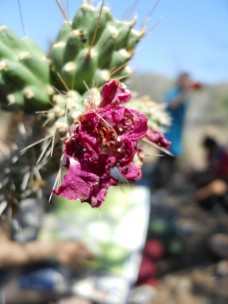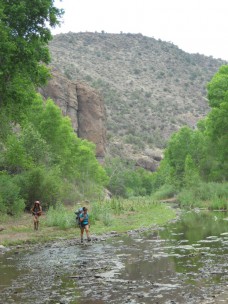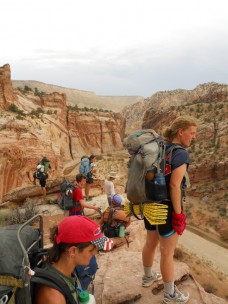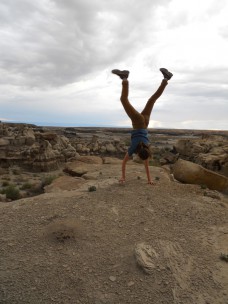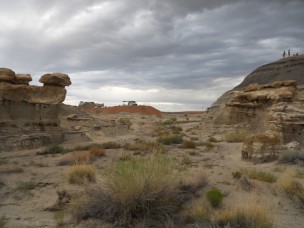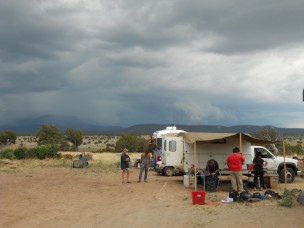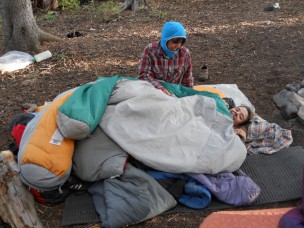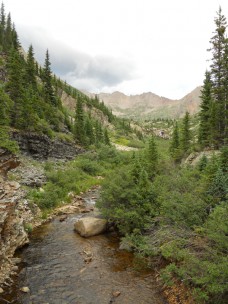Honestly, the greatest thing about Latitude 38 is the the collection of dudes that build the houses. We feel fortunate to have built a business around great people and have it set up where people can work part time to pursue other endeavors that excite them (Bryce and Devin currently have different business schemes going). Or, to just take a few months off to do something completely different (Tom and his various motorcycle adventures and Tommy spending good chunks in Haiti).
The latest to follow suit, was Jeff De Bellis, who climbed off of the scaffolding and headed out to New Mexico for the summer. He’s been back framing with us the last few weeks, but here’s a taste of what he was up to in his own words:
Summer vacations end for most of us when we stop going to school. This, I think, is a serious flaw in American culture. I’ve been out of school for four years now and I’ve still been able to pull off a pretty substantial summer vacation every year.
I don’t mean vacation in the stereotypical usage of the word – lying on the beach drinking margaritas while the skin on your body that hasn’t been exposed to daylight for nine months ages at warp speed under the Floridian sun. I mean it in the literal sense – to vacate the physical and mental space you’ve been occupying and recalibrate yourself. After a brutally mild winter of fixing leaky air hoses and cursing at compound angles, this is exactly what was in order.
I followed the advice of a couple of friends and took a two month gig at The Cottonwood Gulch Foundation, an expedition outfit based in northwestNew Mexico. After a week- long drive across the southern states during which I lived almost exclusively off of pulled pork, Community Coffee, and delta blues music and two weeks of puttering around base camp in New Mexico, I took a passenger van into the Albuquerque airport, picked up 23 high-schoolers from around the world, and embarked on a rhapsodic expedition around the Four Corners area. Six weeks later I would return these kids to the same airport – dirtier, tanner, in better shape, and if I succeeded, a little bit more aware of what they’re capable of.
Instead of the cacophony of generators and air compressors that I had been subjecting myself to first thing in the mornings, I now woke up daily to the sound of hormone-fueled wrestling matches, adolescent humor, kids calling each other “chicken-fuckers,” and the inevitable volley of asinine questions: “Is it going to be hot today?” “Is it going to rain today?” “How far are we going to hike?” “Have you seen my water bottle?” “What are we eating for dinner next Tuesday?”
Our first “road loop” took us up into the Navajo Reservation to help out on the farm of a friend, then south through a recently scorched section of theApacheNational Forestin east centralArizona. Then we laid out gear, loaded our packs, and set off into the Blue Range Wilderness Area for a four night backpack. We hiked up and down parched hills, uncertain where our next water source would be. We cooked rice and beans on small stoves and siesta-ed in abandoned homestead cabins. After two days we hit theBlueRiverand followed the narrow corridor of cottonwood trees through a steep and magnificent canyon. After what would be three of the most grueling days of the entire summer, we left our gear at camp and took a short walk up a side canyon to reach a pristine spring of piping hot water spilling from the rocks and feeding into a series of sitting pools.
Out of the canyon now, we got back into the vans and returned to base camp viaSilverCityandPieTownto rendezvous with the other groups. During our second road loop, we sojourned to the God-forgotten moonscape ofLakePowelland into the Pariah Plateau – one of the most starkly beautiful landscapes on Earth. We had planned to do a three-day backpack through Hackberry Canyon but a woman in the BLM office told us definitively that there would be no water in that or any other canyon in the area. We shortened it to a two-day backpack in which our massive group split up and I led a dozen kids intoPariahCanyon. After hiking up and over enormous sandstone cliffs, we were down in the canyon by late afternoon and had plenty of time to spread out, relax, watch the sun dip behind the red rock, and go for a swim (yup – not only was there water enough to drink after all, there was enough to swim in).
Back on the road, we wound our way through the sparse vegetation and squeaky clean Mormon towns that characterize southernUtah. Along the way we’d stop to stretch our legs with short hikes in tight slot canyons or down to seldom seen remnants of long-abandoned Native American dwellings. Eventually we reached the neon lights ofDurango, the jumping off point for our adventure on the Colorado Trail.
In the morning, while the cooks churned out skillets heaping with fixings for huevos rancheros and the kids packed their packs, the leader of our trip and I went into town. We loitered in a gear shop with cups of coffee and studied maps to lock down our route for the next six days. I mentally compared the shelves stocked with clean, brightly-colored, and horrendously overpriced outdoor gear to my own belongings, acquired mostly from army surpluses, thrift stores, and lost and founds, and at this point barely held together with duct tape and dental floss (which holds up better than any thread).
Our days on the Colorado Trail were cold and wet – rain, hail, and morning frost were not uncommon above11,000 feet. Switching from the incredible meals that we concocted on the road to soggy pitas and chocolate pudding that expired when I was in middle school did not improve morale. But the moments when the sun came out and we could see for miles across the alpine meadows of theSan Juan Mountainswere more than enough to keep us all enthused.
The troop of kids spent the last week of their summer at base camp-journaling, exploring, working on various arts and crafts projects, and as ever, screaming obscenities at each other immediately upon waking up in the morning. Nonetheless, I had become pretty fond of our quirky group and would be sad to see them go. But just as I was ready to leave last spring, come mid-August I was equally ready to get back to the gentle hills and foggy river valleys of the 38th parallel inVirginia.
